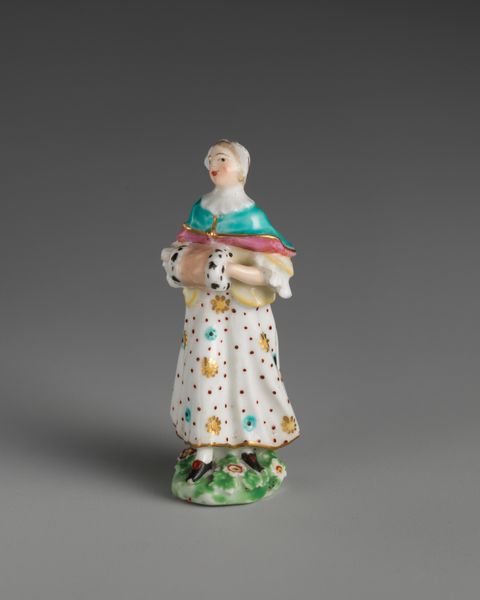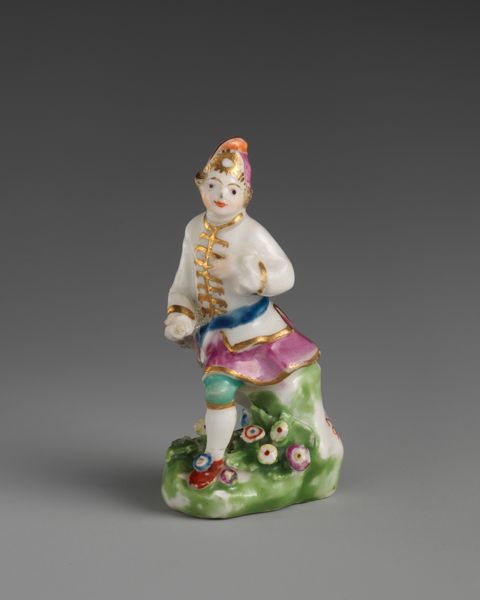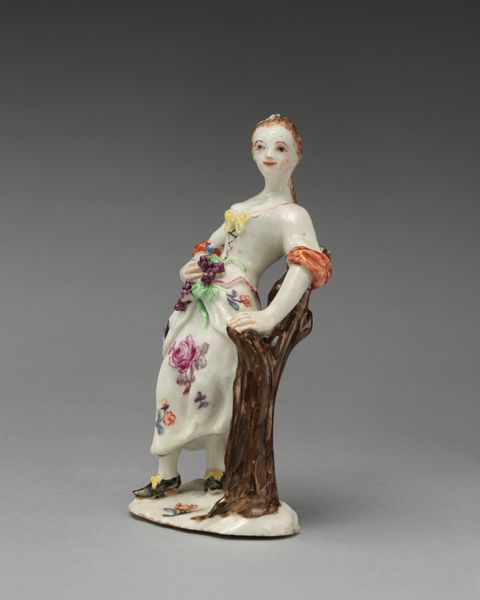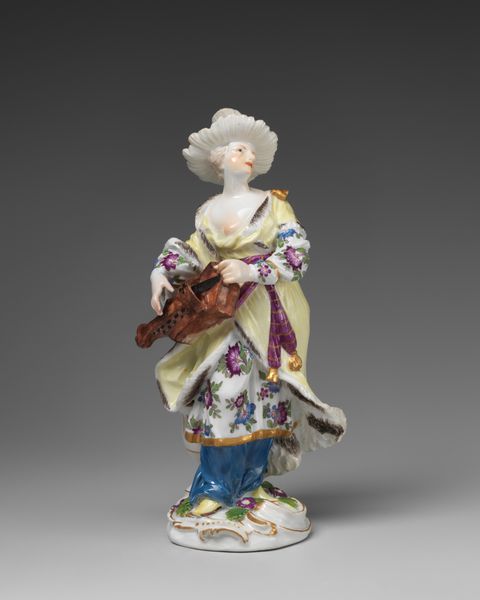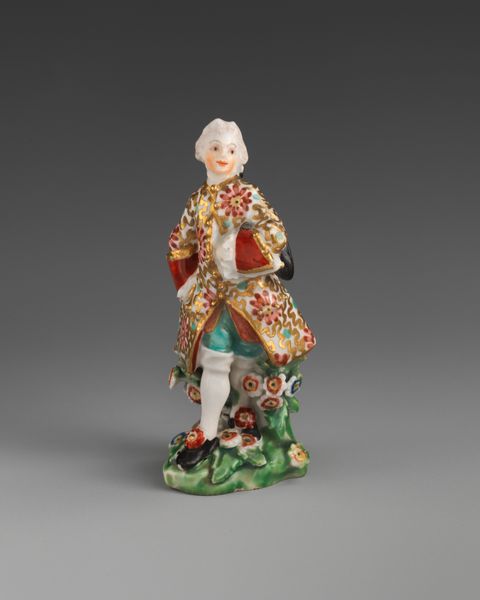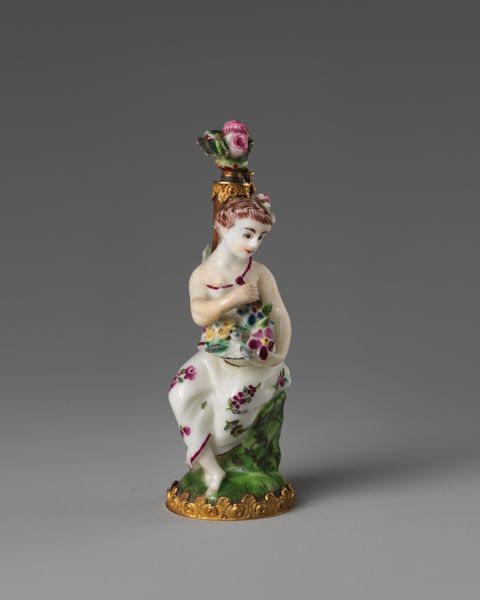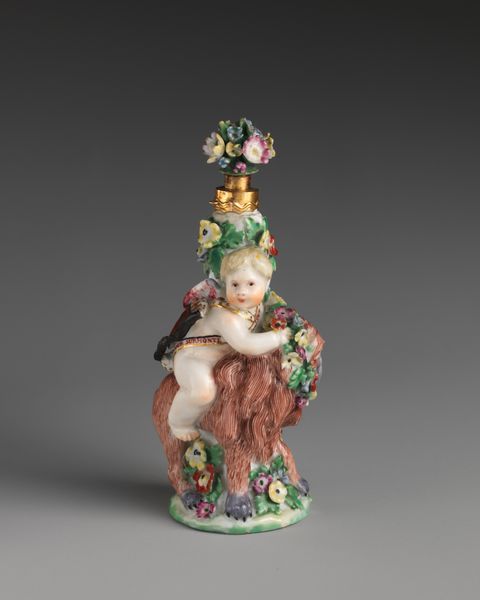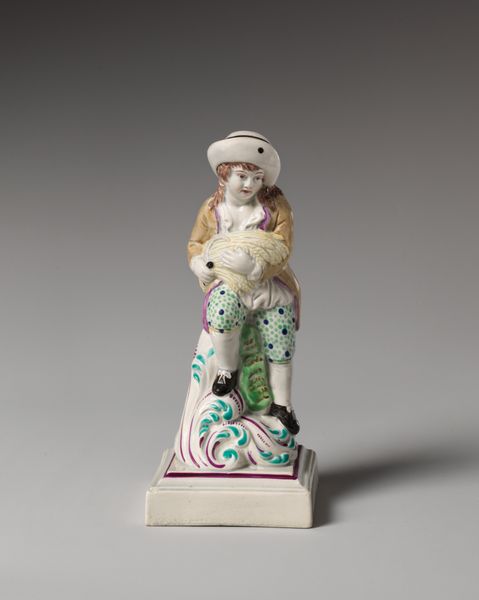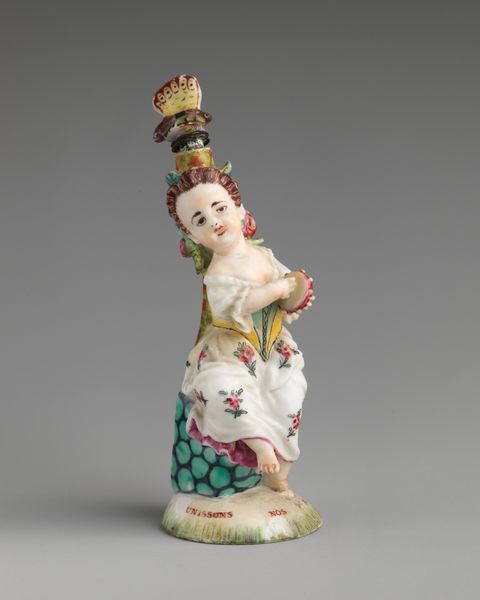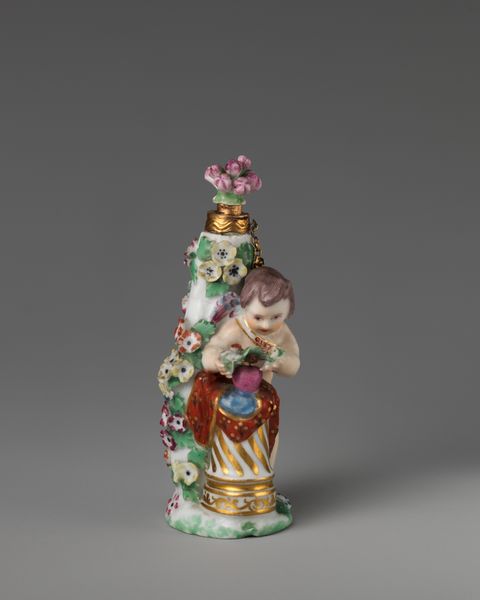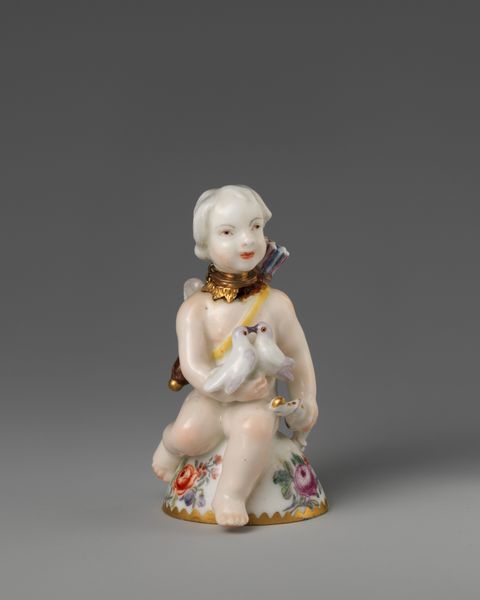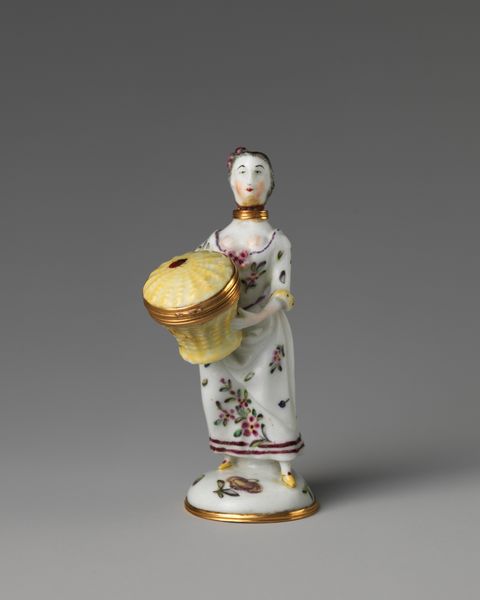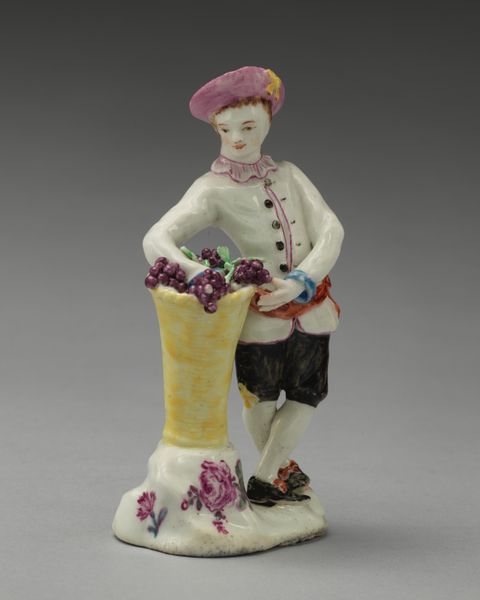
ceramic, porcelain, sculpture
#
ceramic
#
porcelain
#
figuration
#
sculpture
#
genre-painting
#
decorative-art
#
rococo
Dimensions: Overall: 2 1/2 × 2 in. (6.4 × 5.1 cm)
Copyright: Public Domain
Curator: This delicate porcelain figure, titled "Gardener", was crafted sometime between 1760 and 1770 by the Derby Porcelain Manufactory. It’s currently part of the Metropolitan Museum of Art’s collection. Editor: It's precious. The gardener pushing that tiny roller seems utterly unconcerned with any sort of genuine labor. Almost as if it were all for show. Curator: In many ways, it was. The Rococo period embraced such artificiality. These decorative arts often reflect the aristocratic fascination with pastoral scenes, even as their lived realities were vastly different. Think of Marie Antoinette playing milkmaid. Editor: So, not so much about the working class as the elite classes playing at it. It reflects a dangerous disconnect and the privileges enjoyed during that era. It almost romanticizes the working class in a satirical tone. What are your thoughts? Curator: Porcelain itself, initially a rare and expensive material, became a symbol of status. Pieces like this became collectible objects used for decorative purposes. They offered ways to exhibit cultivated taste, literally placing nature or ideas of nature onto a mantelpiece. This sculpture speaks volumes about class distinctions in 18th-century Europe and about how objects become entangled with socio-economic systems. Editor: Indeed. Considering the economic conditions of the working class at the time, this miniature gardener and lawn roller speaks to the incredible opulence enjoyed by the elites of the period. Perhaps it reflects anxiety from that elite class towards the working class, like some kind of reverse appropriation in action. Curator: Precisely, a material rendering of class fantasies and fears. This tiny gardener says more about power and perception than about actual horticulture. Editor: Ultimately, this work prompts consideration of the social context in which it was made. The fact that we are talking about it today and contemplating issues of gender, class, and society is more evidence of its social commentary. Curator: A lasting artifact from a bygone era—provoking questions of power and representation still resonant today.
Comments
No comments
Be the first to comment and join the conversation on the ultimate creative platform.
